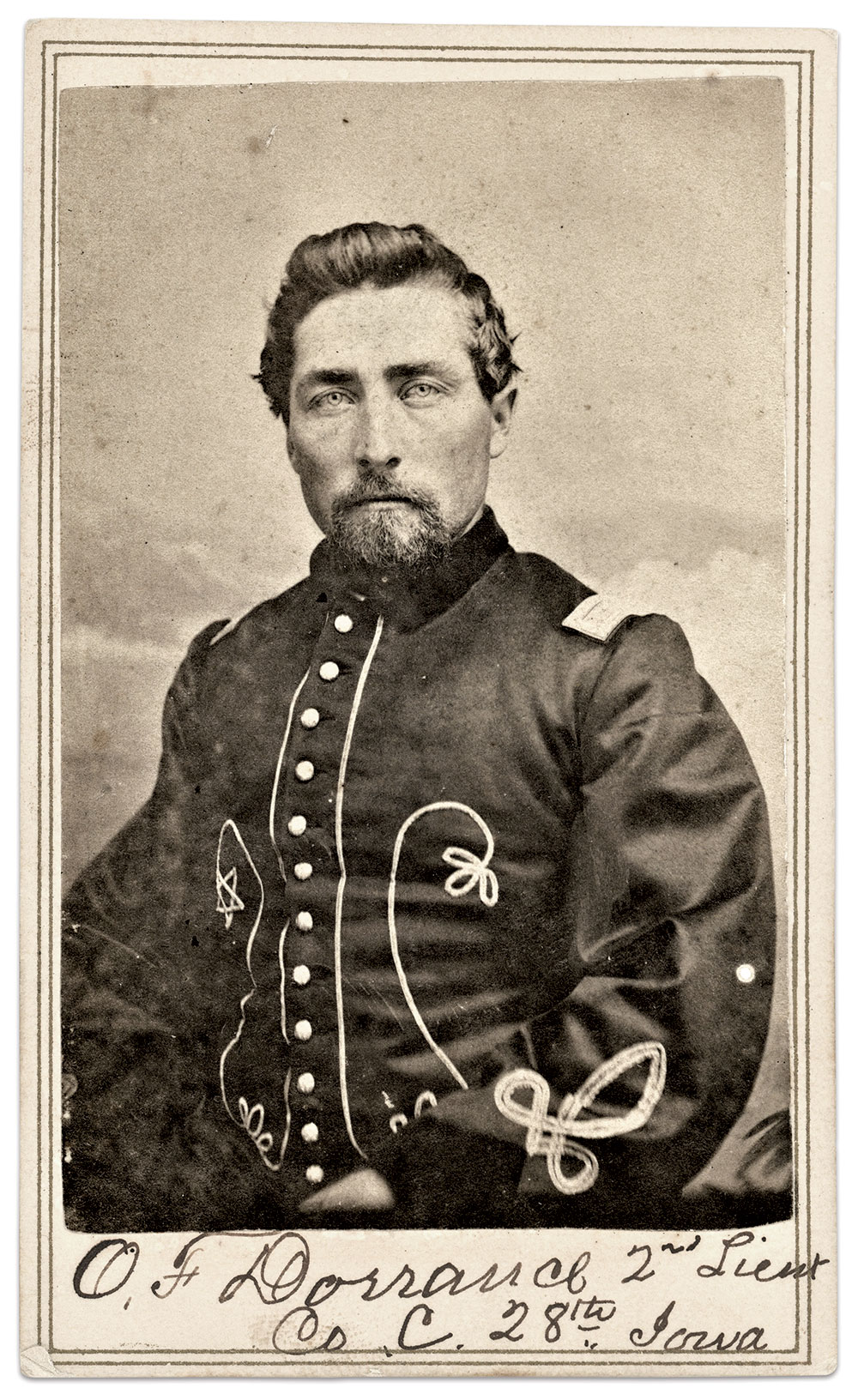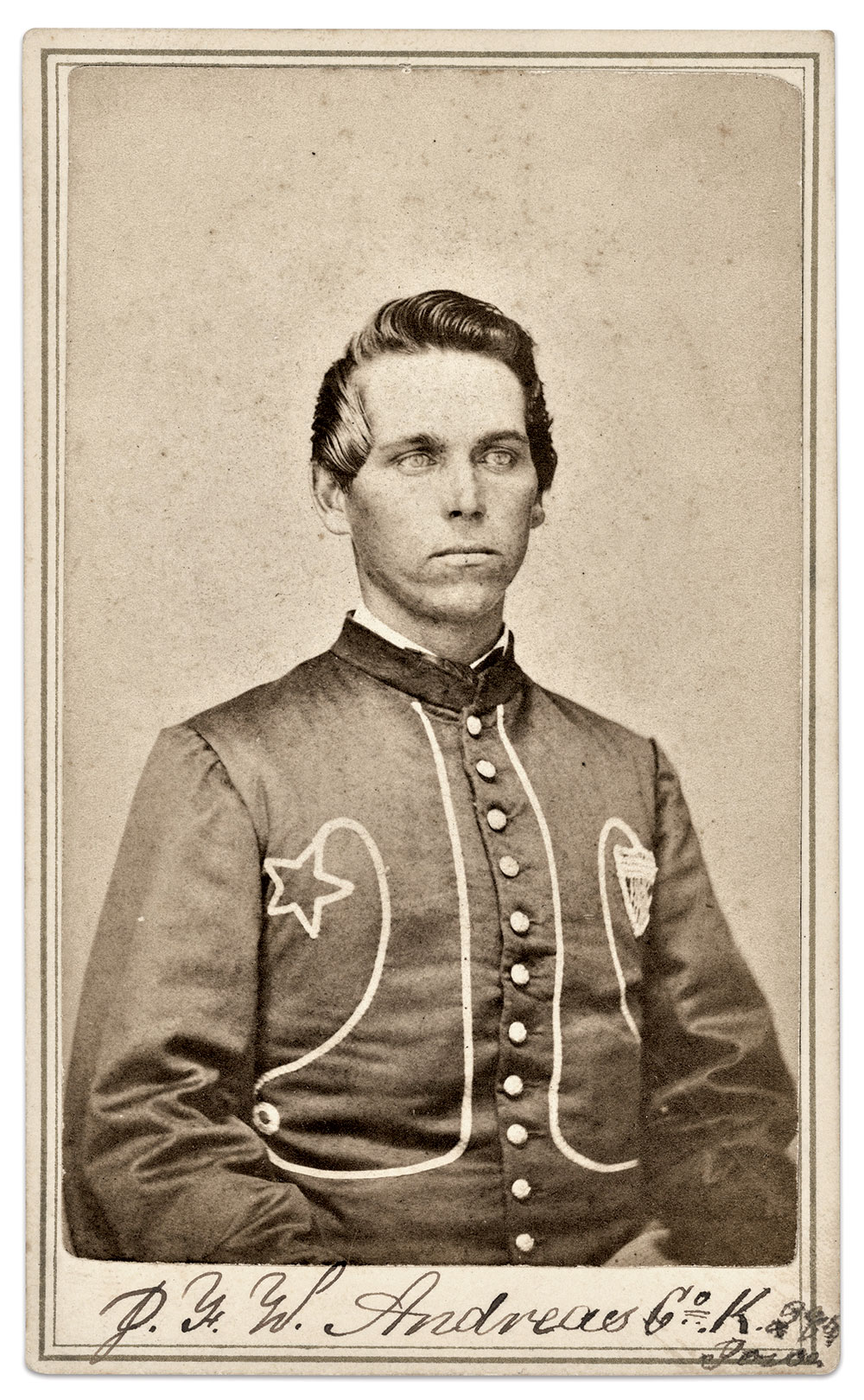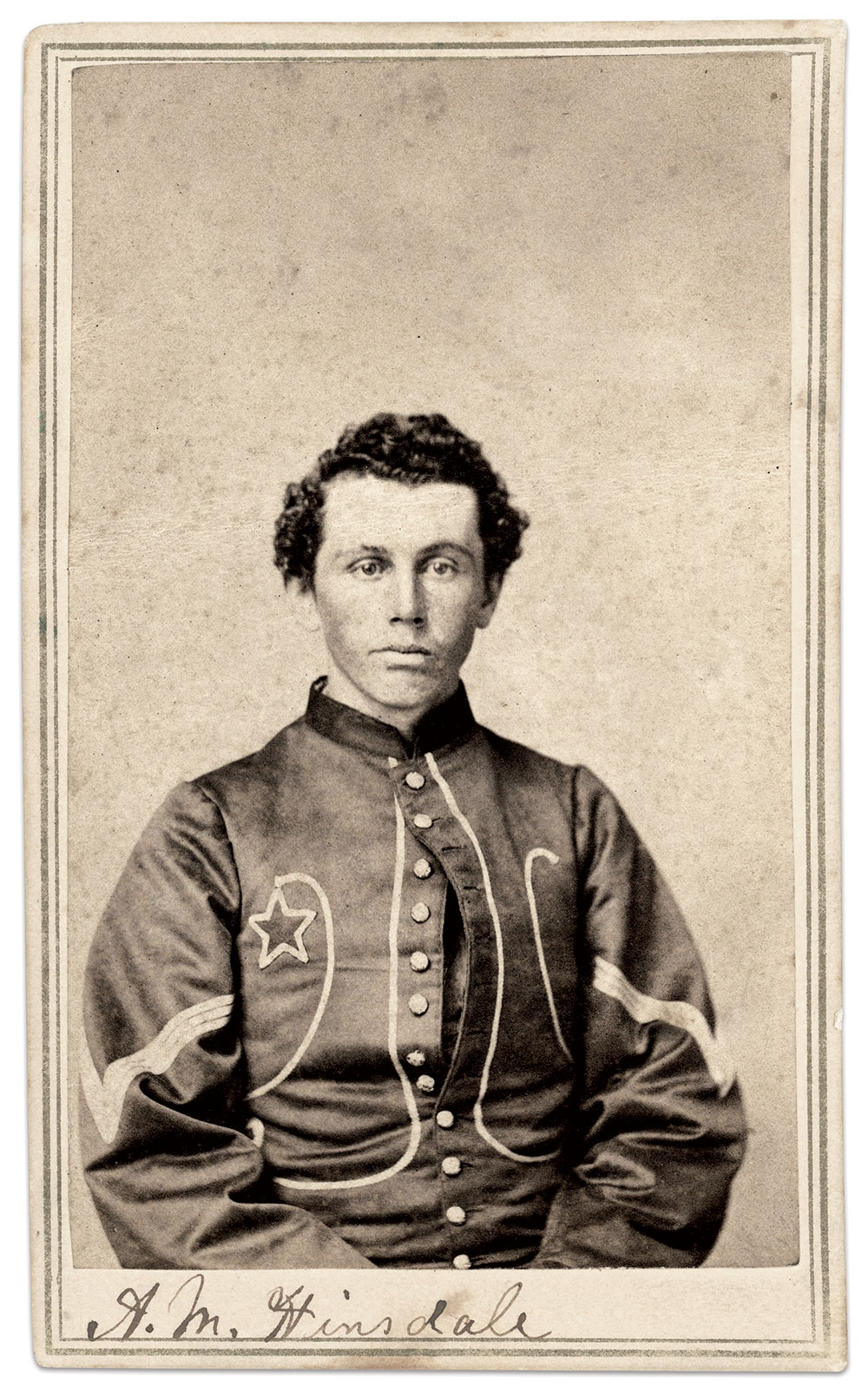By Ronald S. Coddington

“While not originally uniformed as Zouaves this regiment created one of the most unique and readily identifiable uniforms of the war,” writes Daniel J. Miller in the opening of his entry about the 28th Iowa Infantry in American Zouaves, 1859-1959.
The distinctive feature of the jacket is a continuous line of lace that begins along the bottom edge of the short collar, extends vertically down the length of the buttons, then curves horizontally along the waist of the jacket before forming a small loop and snaking across the chest, ending with large patriotic symbols—a shield on the left and star on the right.
To date, research of primary source materials yields no information about how the jacket came into existence But a survey of 16 identified cartes de visite, 15 in the collections of Mark Warren and Roger Davis, and one published in Miller’s book, reveals information that helps answer two elemental questions.
Where and when were the jackets issued?

The imprints on the backs of the cartes locate the photographers in New Orleans. According to a regimental sketch in Roster and Records of Iowa Soldiers in the War of the Rebellion, the 28th was connected to the city on two occasions. The first, from mid-August to mid-September 1863, found the Iowans stationed at Carrollton, La., just a couple miles from the center of New Orleans. The second stint, between Christmas 1863 and early March 1864, found the regiment at various sites near the city.
Prior to its arrival at Carrollton, the 28th had participated in the Vicksburg Campaign, during which it suffered hardships from prolonged duty in the trenches and an inhospitable climate. Its time in the vicinity of New Orleans provided an opportunity to rest, recuperate and re-equip. The men would likely have received new uniforms and other supplies at this time.
Two of the cartes in the study pinpoint the date of the issuance of the jackets. Augustus M. Hinsdale wears sergeant’s chevrons, to which rank he was promoted on Dec. 9, 1863. Amos Silver, a new recruit, mustered into the regiment on Feb. 26, 1864.
Why the elaborate style?

One explanation is an intention to boost morale by providing a unique uniform playing off the Zouave style that had become a fixture of popular culture. The large icons, the star for Iowa and the Union shield, may have been conspicuously placed to remind the men of their patriotic duty to state, country and the Constitution. The icons would have also sent a signal to anyone who came in contact with them, be they friend or foe.
The star and shield motif may have been added to fill a void. During this period, the 28th belonged to the 13th Corps. This organization never adopted a corps badge, making it an anomaly in the Union armies. Perhaps the jacket designers decided to create their own regimental badge.
The shield does not appear in all the cartes. It is missing from Sgt. Hinsdale’s jacket. A three-looped tombeau replaces the shield on the jacket of 2nd Lt. Orange F. Dorrance (and the points of the star are connected by interior lines). The outline of a heart appears on the jacket of Capt. George Phillips.

Ronald S. Coddington is Editor and Publisher of MI.
SPREAD THE WORD: We encourage you to share this story on social media and elsewhere to educate and raise awareness. If you wish to use any image on this page for another purpose, please request permission.
LEARN MORE about Military Images, America’s only magazine dedicated to showcasing, interpreting and preserving Civil War portrait photography.
VISIT OUR STORE to subscribe, renew a subscription, and more.

